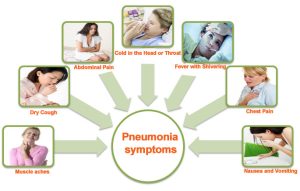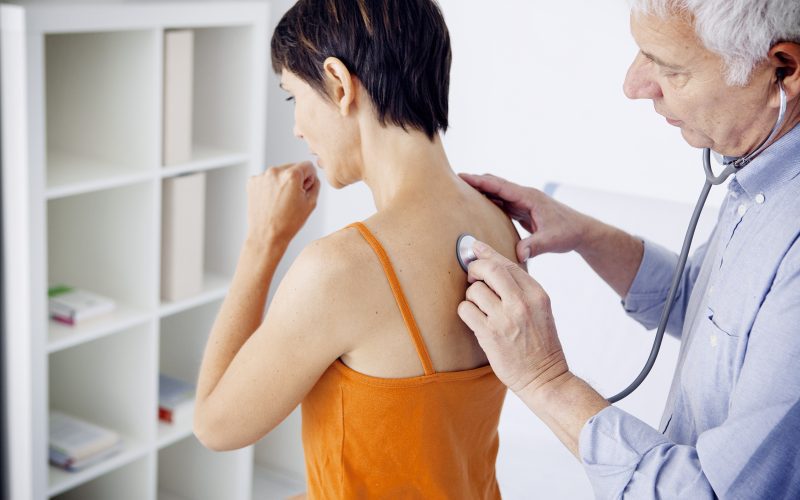Understanding Walking Pneumonia
Walking pneumonia, medically known as atypical pneumonia, is a milder form of pneumonia that typically doesn’t require bed rest or hospitalization. Despite its less severe nature, walking pneumonia can still cause discomfort and disrupt daily activities. Understanding its symptoms, causes, and treatment options is crucial for effective management. Explore More About Health Problems And Their Solutions ( POTS Syndrome)
What Causes Walking Pneumonia?
Walking pneumonia is commonly caused by atypical bacteria, such as Mycoplasma pneumoniae, Chlamydophila pneumoniae, or Legionella pneumophila. These bacteria are different from those responsible for typical pneumonia, such as Streptococcus pneumoniae. Additionally, viruses like respiratory syncytial virus (RSV) and influenza virus can also lead to walking pneumonia.
Symptoms of Walking Pneumonia
The symptoms of walking pneumonia are often milder compared to typical pneumonia, making it challenging to recognize. Common symptoms include:
- Persistent Cough: A dry or productive cough that may worsen at night.
- Fever: Low-grade fever, typically below 102°F (38.9°C).
- Fatigue: Feeling tired or lethargic, even with adequate rest.
- Sore Throat: Irritation or discomfort in the throat.
- Chest Pain: Mild chest discomfort, particularly when coughing or breathing deeply.
- Shortness of Breath: Difficulty breathing, especially during physical activity.

Diagnosing Walking Pneumonia
Diagnosing walking pneumonia often involves a combination of clinical assessment, physical examination, and diagnostic tests. Your healthcare provider may:
Perform a Physical Examination
During the examination, your healthcare provider will listen to your lungs with a stethoscope to check for abnormal sounds, such as crackles or wheezing, which may indicate pneumonia.
Order Diagnostic Tests
Diagnostic tests may include:
- Chest X-ray: To assess the presence of inflammation or infection in the lungs.
- Blood Tests: To evaluate white blood cell count and detect specific antibodies to the causative organism.
- Sputum Culture: To identify the specific bacteria or virus causing the infection.

Treatment Options for Walking Pneumonia
Antibiotics
While walking pneumonia is often caused by bacteria, it can also be viral in nature. Therefore, antibiotics may not always be necessary. However, if the infection is bacterial, your healthcare provider may prescribe antibiotics such as azithromycin or doxycycline to help fight the infection.
Rest and Hydration
Getting plenty of rest and staying hydrated are essential components of recovery from walking . Adequate rest allows your body to focus its energy on fighting the infection, while staying hydrated helps loosen mucus and soothe throat irritation.
Over-the-Counter Medications
Over-the-counter medications such as ibuprofen or acetaminophen can help alleviate symptoms like fever and chest discomfort. Additionally, cough suppressants or expectorants may be recommended to manage cough symptoms.

Preventive Measures
Preventing walking involves adopting healthy habits and minimizing exposure to infectious agents. Here are some preventive measures:
Practice Good Hygiene
- Wash Hands: Regularly wash your hands with soap and water for at least 20 seconds, especially after coughing, sneezing, or touching surfaces in public places.
- Cover Mouth and Nose: Use a tissue or your elbow to cover your mouth and nose when coughing or sneezing to prevent the spread of respiratory droplets.
- Avoid Close Contact: Avoid close contact with individuals who have respiratory infections, and stay home when you’re feeling unwell to prevent spreading the infection to others.
Maintain a Healthy Lifestyle
- Stay Healthy: Maintain a balanced diet, exercise regularly, and get enough sleep to support your immune system and overall health.
- Quit Smoking: If you smoke, quitting can help reduce your risk of respiratory infections and complications.
| Aspect | Typical Pneumonia | Walking Pneumonia |
|---|---|---|
| Severity | Severe, may require hospitalization and bed rest | Mild, often managed at home without hospitalization |
| Causative Agents | Primarily bacteria (e.g., Streptococcus pneumoniae) | Atypical bacteria (e.g., Mycoplasma ) |
| Common Symptoms | High fever, productive cough, severe chest pain | Low-grade fever, persistent cough, mild chest discomfort |
| Treatment | Often requires antibiotics | Antibiotics may not always be necessary |
| Recovery Time | Longer recovery period | Shorter recovery period |
Conclusion
While walking pneumonia is generally less severe than typical , it can still cause discomfort and disrupt daily life. Recognizing the symptoms, seeking timely medical attention, and following the prescribed treatment plan are crucial steps in managing the condition effectively. By adopting preventive measures and maintaining a healthy lifestyle, you can reduce your risk of developing walking and other respiratory infections. If you experience symptoms suggestive of walking , consult your healthcare provider for proper evaluation and treatment.












